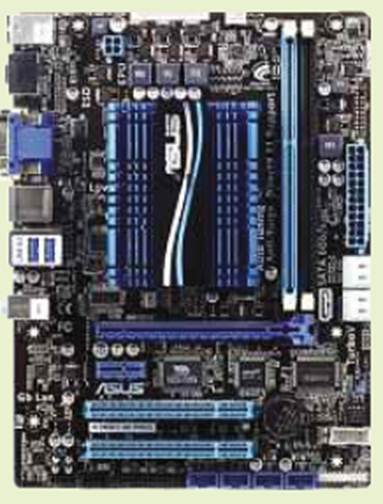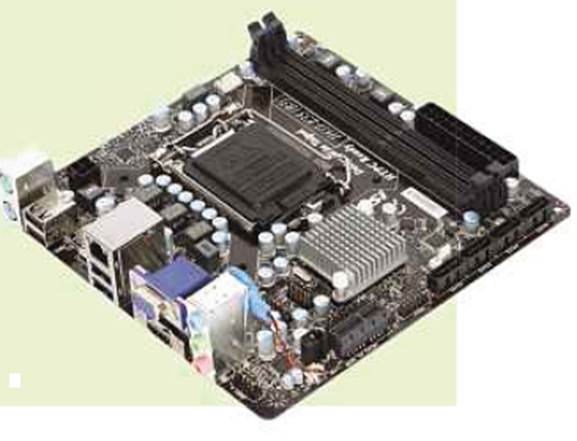Can an Atom system play high-quality
streaming video? How do you silence the fans without breaking your PC? Antony
Leather examines the options for building a small and quiet PC to place under
your TV
Despite the onslaught of smart TVs,
consoles, media streamers and set-top boxes, it can still be worthwhile having
a PC in your lounge. This is for the simple reason that none of the above can
do everything that a PC can do. A PC can record and pause live TV, play back
streaming media from services such as iPlayer, play games and Blu-ray discs,
and also function as a lossless audio jukebox. With the PC’s flexibility, you
can also choose which software to use, and its storage banks are easily
upgraded too.
Putting together a home theatre PC (HTPC)
isn’t as easy as it might sound though. Noise, cooling and hardware are
important considerations, and it’s also pointless having a great HTPC if you
can’t control it easily from your sofa. Known á 10-foot user interfaces, there
are plenty of options that focus on making your HTPC easy to use from around
10ft away from a typical 31in or larger TV screen. Whatever your needs, we take
a look at the hardware, software and interfaces needed to create to perfect
HPTC.
Performance
We’ve chosen four different setups to find
out which is the best option for an HTPC, from a simple Intel Atom setup to
Core i3 and AMD A8 systems.
Intel Atom/ Nvidia Ion system

Asus AT5IONT-I $204.5 inc VAT
4GB (2 x 2GB) Corsair DDR3 SO-DIMM
PC3-10600, 9-9-9-24 $27 inc VAT
Total $231.9 inc VAT
Representing the Intel Atom and Nvidia Ion
combination is Asus’ AT5IONT-I mini-ITX motherboard. It’s a gorgeous-looking
piece of kit with a passive heatsink. However, the downsides are its lowly set
of two SATA ports, and its requirement for laptop DIMMS.
AMD E-450 system

Asus E45M1-M-Pro $180.5 inc VAT
4GB (2 x 2GB) Corsair DDR3 PC3-1066,
9-9-9-24 $27 inc VAT
Total $207.9 inc VAT
Next up is a system based on Asus’
E451-M-Pro. This is a micro-ATX motherboard sporting an integrated AMD E-450
APU with Radeon HD 6320 graphics. It has four SATA ports, two PCI slots (giving
you room to install TV tuner cards or sound cards), a 1 x PCI-E slot and a
full-sized 16 x PCi-E graphics slot.
AMD A8-3870K system

Gigabyte A75M-UD2H (ebuyer.com) $ 97.5 inc
VAT
AMDA8-3870K (cclonline.com) $126.5 inc VAT
4GB (2 x 2GB) Corsair DDR3 PC3-1066, CAS
9-9-9-24 $27 inc VAT
Total $251 in VAT
We also wanted to see how much improvement
you gained by using a separate APU, rather than a low-power integrated chip, so
we paired an AMD A8-3870K. The new A10 series of APUs wasn’t available when we
were testing for this feature, but this test will still give you a good idea of
performance. We paired this with a Gigabyte A75M-UD2H Socket FM1 motherboard.
It has two 16x PCI-E slots, a 1 x PCI-E slot and a PCI slot, as well as a total
of five SATA ports.
Intel Core i3 system

Finally, we found the cheapest mini-ITX
board with an Intel H61 chipset and an HDMI port, settling on MSI’s H61-E35.
MSI has squeezed in four SATA ports and a 1 x PCI-E slot, but it lacks USB 3
support. We’re pairing this with an Intel Core i3-2105 CPU and using the
integrated Intel HD Graphics 3000 system for our game tests. Shortly after we
finished this feature, Intel launched its Ivy Bridge-based Core i3 chips, which
we didn’t have time to test. However, the current Ivy Bridge Core i3 chips only
have Intel HD 2500 Graphics, which has fewer execution units than the Intel HD
3000 Graphics system. As such, the Sandy Bridge Core i3-2105 is a better
choice, especially for gaming.
|
Price
|
|
MSI H611-E35
|
$71.9
|
|
Intel Core i3-2105
|
$161.5
|
|
4GB (2 x 2GB) Corsair DDR3 PC3-1066, CAS
9-9-9-24
|
$27
|
|
Total
|
$260.5
|
The hardware
Your first job is to balance the hardware
to suit your requirements. An HTPC needs to be powerful, but also small and
quiet enough to sit under your TV without being noticed. A sleek little box
roughly the same sizes as an old HS player will sit comfortably in most TV
cabinets, and this is usually the best option. This will usually allow room for
several hard disks, a mirco-ATX motherboard, an optical drive and 120mm fans.
Before you choose your case, it’s worth considering which motherboard and PSU
you’ll be using.
Opting for a mini-ITX motherboard will save
on space, but you’ll often be limited to four or fewer SATA ports, and a single
PCI-E expansion slot. If you don’t plan to include a discrete GPU then you’ll
also need to make sure it’s equipped with an HDMI port. What’s more, while
there are plenty of small PSUs available (many mini PC case include these out
of the box), a standard-sized ATX PSU equipped with a 120mm fan will almost
certainly be the quietest option.
Benchmarks
We put each system through its paces in BBC
iPlayer, Netflix, 28,000Kb/sec HD movie playback and Left 4 Dead 2 to see which
system offers the best value for money while passing the key HTPC tests. We
allowed our copy of Windows 7 to acquire all the latest updates, and used the
latest versions of Adobe Flash, Microsoft Silverlight, and the latest BIOS
updates and drivers for our test systems.
We started with streaming video using BBC
iPlayer and Netflix on a 60Mb/sec Internet connection to make sure we had
enough bandwidth. In standard definition, all our systems were able to handle
streaming.
However, the Intel Atom/Nvidia Ion system
stuttered in iPlayer when watching HD programmes. Along with the AMD E-450
system, it also failed to provide a smooth experience streaming content in HD
using Netflix. In fact, both these systems were also pretty sluggish when just
navigating the Windows desktop. However, the Intel Core i3 and AMD A8 systems
passed all our streaming tests with flying colors.
None of the systems struggled to playing
our local high-definition 1080p H.264 video file, although playing a Blu-ray
movie saw the Intel Atom/Nvidia Ion and AMD E-450 systems hit the buffers on
occasions, so we’ve marked these as fails. In our video content tests, only the
Intel Core i3 and AMD A8 system could provide smooth playback across the board.